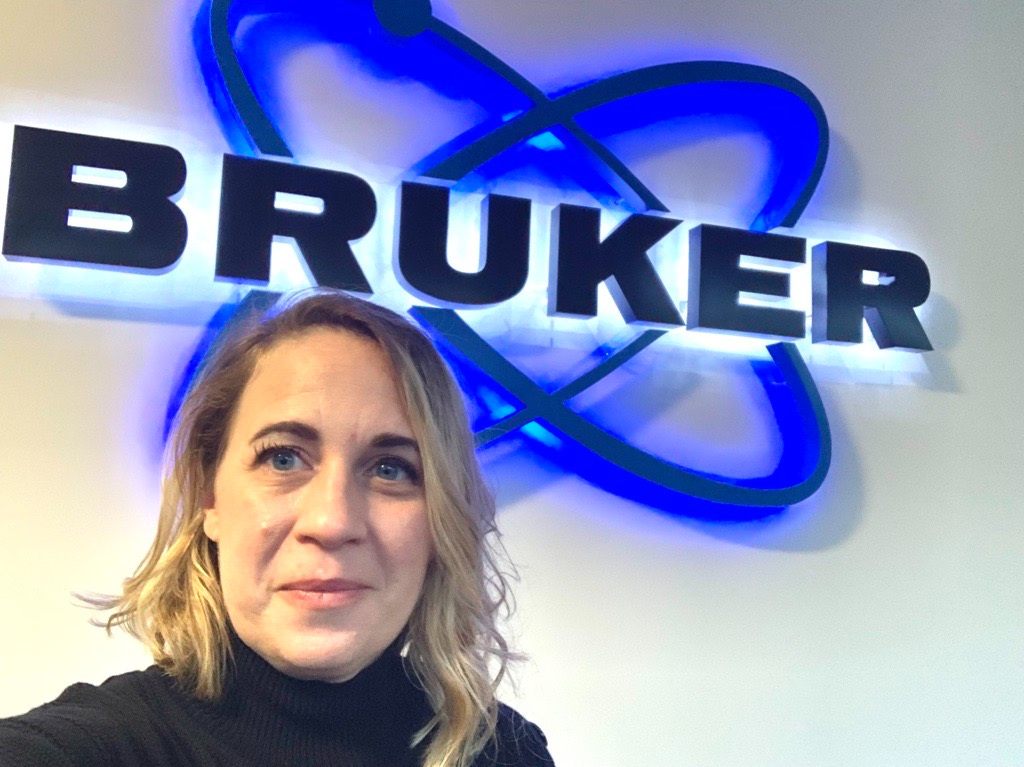Breaking Through the Bottlenecks: Innovation that's Transforming Life Science Mass Spectrometry
 insights from industryRohan ThakurPresident of Life Sciences Mass SpectrometryBruker
insights from industryRohan ThakurPresident of Life Sciences Mass SpectrometryBrukerGet insights into Bruker's innovative approach to Life Sciences Mass Spectrometry from Rohan Thakur, the President of Life Sciences Mass Spectrometry, in the debut episode of the omg OMx podcast series. Discover how Bruker is harnessing its momentum and seizing new opportunities in the field, and explore the groundbreaking solutions that are revolutionizing the future of mass spectrometry. Revisit key highlights from the episode and catch the full episode on-demand.
As a dominant player in the magnetic resonance mass spectrometry (MRMS) space, how has the introduction of Trapped Ion Mobility Spectrometry (TIMS) technology changed Bruker's position in the mass spectrometry market?
It all started with what we thought was a disruptive technology that we believed could shake up the proteomics market and compete with incumbent technologies.
Our team saw the potential of Trapped Ion Mobility Spectrometry (TIMS) technology. We knew it could shake up the proteomics market and compete with the incumbent technologies already out there. I mean, most LC runs in the proteomics field take forever – we're talking around 2 hours on average. But with the timsTOF and its parallel accumulation-serial fragmentation (PASEF®) feature, we can get the same amount of information in just 20 minutes! It's an absolute game-changer.
Once we knew we had this speed where we could crank through many samples a day, we got the software to help convert these data files into actionable knowledge. That’s when PaSER was introduced. Now, for the first time, we had innovation in hardware, and we were able to give our users information right after the file was closed.
These two things put together — the rapid increase in the number of samples analyzed per day, and the data that could be analyzed as soon as the run was over was a real breakthrough innovation in a field that has been stagnant for about 15 years.
How has Bruker contributed to recent breakthroughs in plasma proteomics?
We're attracted to [plasma proteomics] because the leakage products from tumors can be found in plasma. That's why we acquired PreOmics, a sample preparation company, and now we have a product that allows us to go through samples quickly. In some applications in plasma proteomics, we can look at 200-300 proteins in just 5 minutes. That's pretty impressive, especially when you consider that in a research or clinical setting, you want data processed and analyzed quickly. You can't wait weeks for data to be turned around.
The speed of PASEF, TIMS technology, combined with our PaSER package, allows us to go through many samples a day and derive information that can be used to make a decision or provide advice as a secondary test. We've got some really impressive users, too – Dr. Roman Fisher at Oxford, Matthias Mann at Copenhagen, and Alain Van Gool at the Radboud are just a few of the people using our systems. It's exciting to see the impact our systems are having on the field, and we're proud to be a part of it.
What is the importance of collaborating when you're at the leading edge of scientific advancements in the field, and how does it feel to be a part of such breakthroughs?
Our focus is to listen and work closely with the experts in the field. It’s a team effort. These early adopters guide us on where to take the technology. We have the technology that could help, now the question becomes: what’s the biological relevance of the technology?
We see these early adopters and key opinion leaders (KOLs) as the real trailblazers at the leading edge of the industry. And we're here to support them in their work to solve complex problems in oncology and biology. Their feedback helps us design instruments and capabilities that meet their specific needs. Ultimately, our goal is to enhance the work they're doing and make a meaningful impact in the field.

Image credit: Bruker Life Sciences Mass Spectrometry
Have you personally had any awe-inspiring moments while learning about the potential applications of this technology?
One of the coolest moments for me was when a good friend of mine, Roman Fisher, sent me a picture of 96 well-plates stacked all the way to the top of the timsTOF and said, "Look Rohan, this is the impact your product has made in our daily life."
It was one of those moments where I thought, "Wow, we actually did it!" For the first time, he could cut through 5000-6000 samples without having to clean his mass spectrometer. That was a huge achievement for us.
Seeing that image and knowing that we had designed a robust mass spectrometer that could handle that kind of workload was really exciting. It was definitely an "omg" moment for me.

Image credit: Bruker Life Sciences Mass Spectrometry
What are your thoughts on the rapid growth and success of spatial proteomics and Omics in general at Bruker?
That comes again from listening to one of our KOLs, Matthias Mann, who helped us make a breakthrough. Matthias and his team are using deep visual techniques to evaluate tumors and identify the proteins within them. They use a technique called laser capture microdissection to take a closer look at individual cells within the tumor microenvironment.
We had a debate internally about whether to go label-free or use labels in our MALDI Imaging techniques, and our collaboration with AmberGen helped us decide. We now have a powerful technique, and the only question that remains is whether we can achieve the sensitivity required to follow proteins with highly sensitive LCMS approaches to MALDI approaches.
I'm excited that we're in a position to offer our customers the best of both worlds. We can look at proteins within a single cell, and we can connect the two techniques to benefit our users. Our customers have been asking us to do this, and I think we're living in a wonderful era where we can make this happen. I can't wait to see the results that will come from this collaboration!
Are there any scientists or researchers in the field that you admire but haven't had a chance to meet yet? Who is your "science crush," if you will, someone that you look up to and think could make a big impact on the future of science?
Well, I'm an old-timer in this field, so I've had the pleasure of meeting and learning from some of the biggest names like John Yates, Matthias Mann, and Albert Heck. It's been a fulfilling career so far. But you know what really excites me these days? It's the idea of bridging the gap between mass spectrometry and clinical practice. I want to hear from oncologists and really understand how we can make mass spectrometry a routine tool in the clinic, just like genomics. If we can make that happen, it would be a game-changer.

Image credit: Bruker Life Sciences Mass Spectrometry
Missed the episode? Catch up now with on-demand streaming!
About the speaker
Rohan Thakur, Ph.D., President Life Sciences Mass Spectrometry at Bruker

Rohan Thakur, Ph.D., President of Life Sciences Mass Spectrometry at Bruker, joined Bruker in 2010 as General Manager for the CAM MS team in Fremont, CA, being promoted consequently to Vice President Quadrupole Business and Senior Vice President within his first five years before taking over his new role. He has over 20 years of experience in mass spectrometry, including 14 years in applications and MS development, and is also the owner of several patents in the field of mass spectrometry. During his career, he held positions as Director of Global Marketing for mass spectrometry solutions at Thermo Scientific. He was Director of Drug Discovery at a Pharma CRO for 2-years before joining Bruker. He received his Ph.D. in Chemistry from Kansas State University. He did post-doctoral studies at Rutgers University, where his work involved using high-resolution MS analysis to prove the formation of ring-opened benzene metabolite-DNA and protein adducts.

omg OMx host: Kate Stumpo, Senior Market Manager at Bruker

This information has been sourced, reviewed, and adapted from materials provided by Bruker Daltonics.
For more information on this source, please visit Bruker Life Sciences Mass Spectrometry.
Sponsored Content Policy: News-Medical.net publishes articles and related content that may be derived from sources where we have existing commercial relationships, provided such content adds value to the core editorial ethos of News-Medical.Net which is to educate and inform site visitors interested in medical research, science, medical devices and treatments.
Source: Read Full Article



